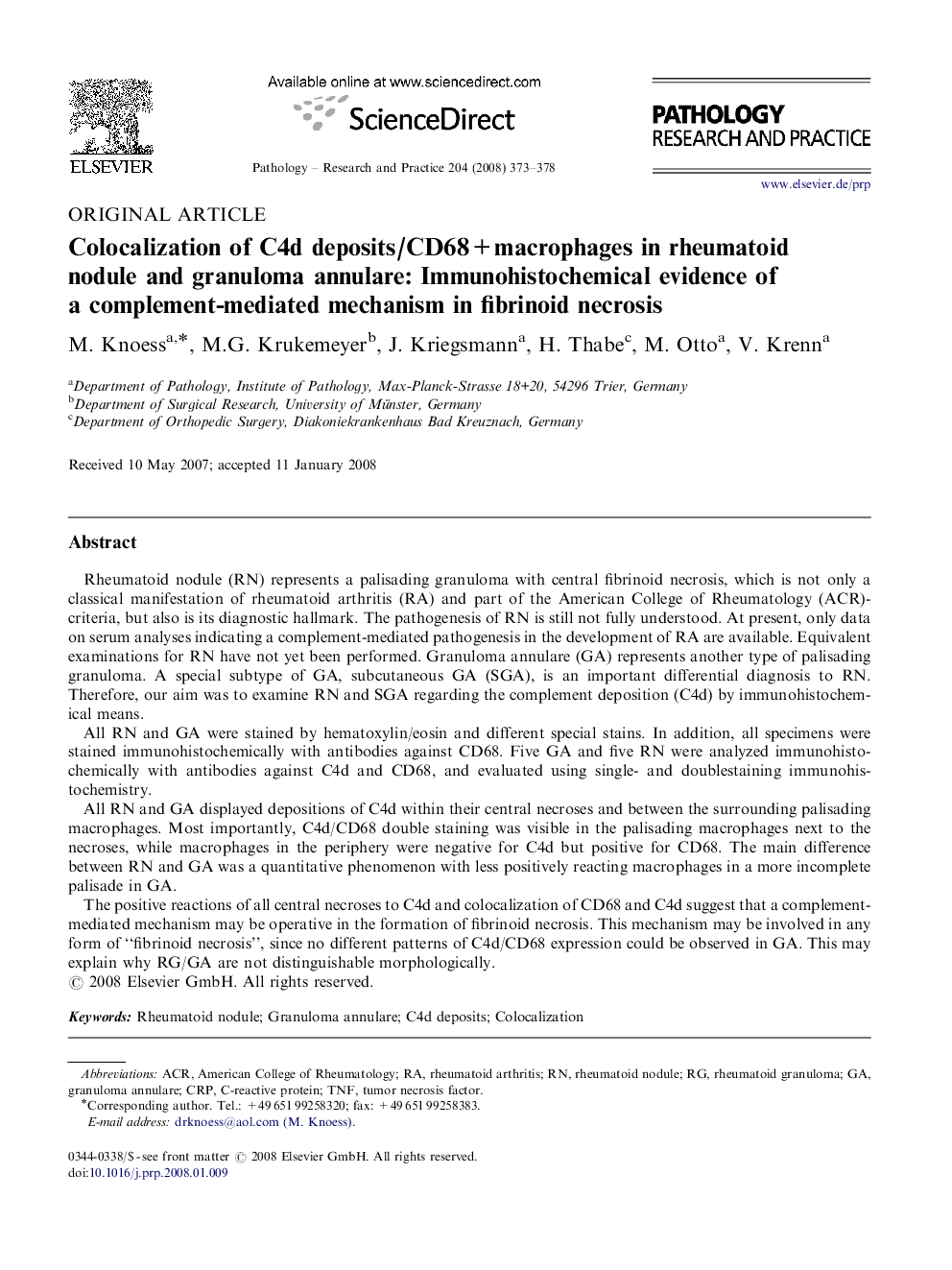| کد مقاله | کد نشریه | سال انتشار | مقاله انگلیسی | نسخه تمام متن |
|---|---|---|---|---|
| 2156712 | 1090482 | 2008 | 6 صفحه PDF | دانلود رایگان |

Rheumatoid nodule (RN) represents a palisading granuloma with central fibrinoid necrosis, which is not only a classical manifestation of rheumatoid arthritis (RA) and part of the American College of Rheumatology (ACR)-criteria, but also is its diagnostic hallmark. The pathogenesis of RN is still not fully understood. At present, only data on serum analyses indicating a complement-mediated pathogenesis in the development of RA are available. Equivalent examinations for RN have not yet been performed. Granuloma annulare (GA) represents another type of palisading granuloma. A special subtype of GA, subcutaneous GA (SGA), is an important differential diagnosis to RN. Therefore, our aim was to examine RN and SGA regarding the complement deposition (C4d) by immunohistochemical means.All RN and GA were stained by hematoxylin/eosin and different special stains. In addition, all specimens were stained immunohistochemically with antibodies against CD68. Five GA and five RN were analyzed immunohistochemically with antibodies against C4d and CD68, and evaluated using single- and doublestaining immunohistochemistry.All RN and GA displayed depositions of C4d within their central necroses and between the surrounding palisading macrophages. Most importantly, C4d/CD68 double staining was visible in the palisading macrophages next to the necroses, while macrophages in the periphery were negative for C4d but positive for CD68. The main difference between RN and GA was a quantitative phenomenon with less positively reacting macrophages in a more incomplete palisade in GA.The positive reactions of all central necroses to C4d and colocalization of CD68 and C4d suggest that a complement-mediated mechanism may be operative in the formation of fibrinoid necrosis. This mechanism may be involved in any form of “fibrinoid necrosis”, since no different patterns of C4d/CD68 expression could be observed in GA. This may explain why RG/GA are not distinguishable morphologically.
Journal: Pathology - Research and Practice - Volume 204, Issue 6, 2 June 2008, Pages 373–378